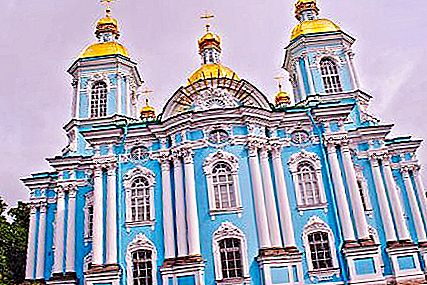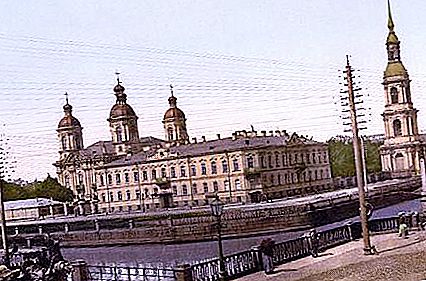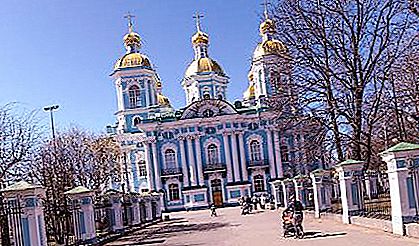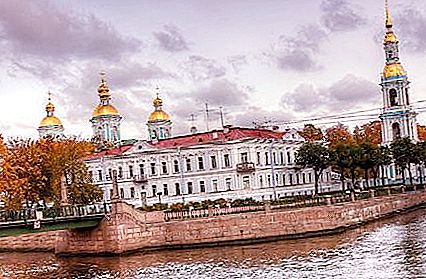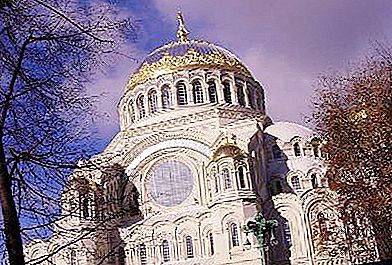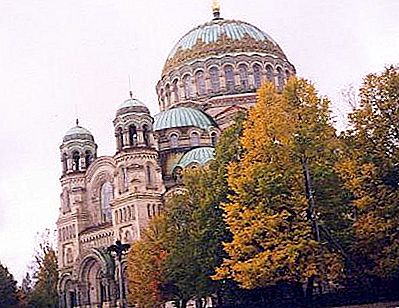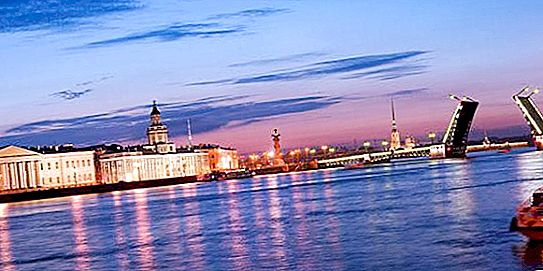Among a considerable number of Orthodox churches in St. Petersburg, St. Nicholas Cathedral occupies a special place. This is one of the oldest temples of this magnitude in the entire capital of the Russian Empire. It stands out with its vivid expressiveness of its architecture and the many circumstances of Russian history associated with it for more than two and a half centuries of its existence.
Construction background
St. Nicholas Cathedral in St. Petersburg was erected during the reign of Empress Elizabeth Petrovna. He owes much of his existence to such a prominent historical figure of the Petrine era as Prince Mikhail Golitsyn. During the reign of the daughter of Peter the Great, he held the administrative post of president of the Admiralty College. It was from this high-ranking state nobleman that the initiative proceeded according to which the capital stone St. Nicholas Cathedral should be erected on the site of the existing wooden church in the area of Kanonerskaya Street. According to the ancient Orthodox tradition in Russia, St. Nicholas was considered the patron saint of sailors and all those who were somehow connected with the sea. The idea of Mikhail Mikhailovich Golitsyn received the highest monarchial approval.
How the temple was built
St. Nicholas Cathedral in St. Petersburg was built in nine years. At the level of development of construction equipment of the mid-eighteenth century, this is a rather short period. For comparison: the construction of the famous St. Isaac's Cathedral in the next century lasted more than forty years. The place for the construction of the cathedral was not chosen by chance. In this part of the city, sailors, shipbuilders and officials of the Naval Department constantly lived. The architect of the cathedral S.I. Chevakinsky. The proximity of such waterways as the Fontanka and the Catherine Canal was also important. Among other things, it was convenient to deliver materials for large-scale construction. And Prince Golitsyn could not have a lack of serf labor.
Architectural features
Stylistically, St. Nicholas Cathedral in St. Petersburg is an outstanding example of the so-called "Elizabethan Baroque." Most of the architectural works of this style are characterized by the scale of buildings, the pretentiousness of the decorative design of facades and interiors. The building of the Nikolsky Cathedral has a traditional cruciform layout and a five-domed layout of the main architectural volumes of the upper tier. The facades are brightly decorated in a two-tone color scheme characteristic of Russian Baroque. The building is crowned by five gilded domes towering above the roofs of the surrounding neighborhoods. The temple complex is complemented by a separate four-tier bell tower with a pointed spire.
Cathedral of Russian sailors
The St. Nicholas Cathedral in St. Petersburg was originally designated in the project as the "Naval Regimental Church". And there is nothing surprising in the fact that he was destined to enter Russian history as the main symbolic church uniting all Russian sailors. That is why near the cathedral there is a memorial obelisk in honor of the Russian sailors who died in the battle of Tsushima, and memorial signs are installed in the temple in honor of the crew of the nuclear submarine Komsomolets and other ships that did not return to their pier from long voyages. Divine services are regularly held in St. Nicholas Cathedral in honor of those who are away from their native coast. Every year in August, a memorial service for the sailors of the Kursk nuclear submarine is held within the walls of the church. It should be remembered that the St. Nicholas Church is the oldest, but far from the only cathedral of the Navy in Russia.
Cathedrals of St. Petersburg
Any architectural work always exists in the context of immediate and more distant surroundings. That is why it is interesting to look at St. Nicholas Cathedral in St. Petersburg against the backdrop of the entire city. The new capital of the Russian Empire was built, unlike Moscow, by no means randomly. And in the general urban development plan, the significance that the state attached to the church as one of the main foundations of social life is clearly traced. If you look at the city plan, it is impossible not to notice that the majestic Orthodox cathedrals are located in almost all the nodal points of the northern capital. They are very diverse in their architectural solutions, but in them, among other things, the idea of state imperial greatness is clearly traced. It is characteristic that in the capital of the Russian Empire, in addition to traditional Orthodox cathedrals, one can also find Catholic churches, Protestant churches and Muslim mosques. Not one of the peoples included in the empire was religiously deprived. A special place in St. Petersburg and its environs is occupied by temples dedicated to the patron saint, St. Nicholas the Pleasant. By the way, he was traditionally one of the most revered saints in Russia.
Nicholas Naval Cathedral, Kronstadt
No less significant for Russian sailors is the Orthodox church located on an island in the Gulf of Finland at the mouth of the Neva. Kronstadt has traditionally been considered the main base of the Russian fleet. St. Nicholas Cathedral, towering above its coast, is visible from afar. This was the intention of its creators - it can be guided as a beacon to everyone who was approaching the capital of the empire from the Baltic direction. The grandiose cathedral was laid on the Anchor Square of the city of Kronstadt in 1903, and was completed ten years later. Shortly before the outbreak of World War I, it was consecrated. The imperial family took part in the solemn prayer for this occasion.
Architecture of the St. Nicholas Cathedral in Kronstadt
The grandiose dome structure resembles the famous St. Sophia Cathedral in Constantinople with its appearance. It was this classic architectural image that was taken as a basis by the architect V.A. Kosyakov. The strongest Byzantine influence is felt in the decorative design of facades and interiors. The best craftsmen gathered from all over Russia were involved in their creation. The design of the church in Kronstadt received the highest approval and state funding for construction. His budget was one of the largest in Russian history, he was approaching two million rubles. The Russian Empire spared no means for iconic architectural works, which were supposed to symbolize its greatness.
